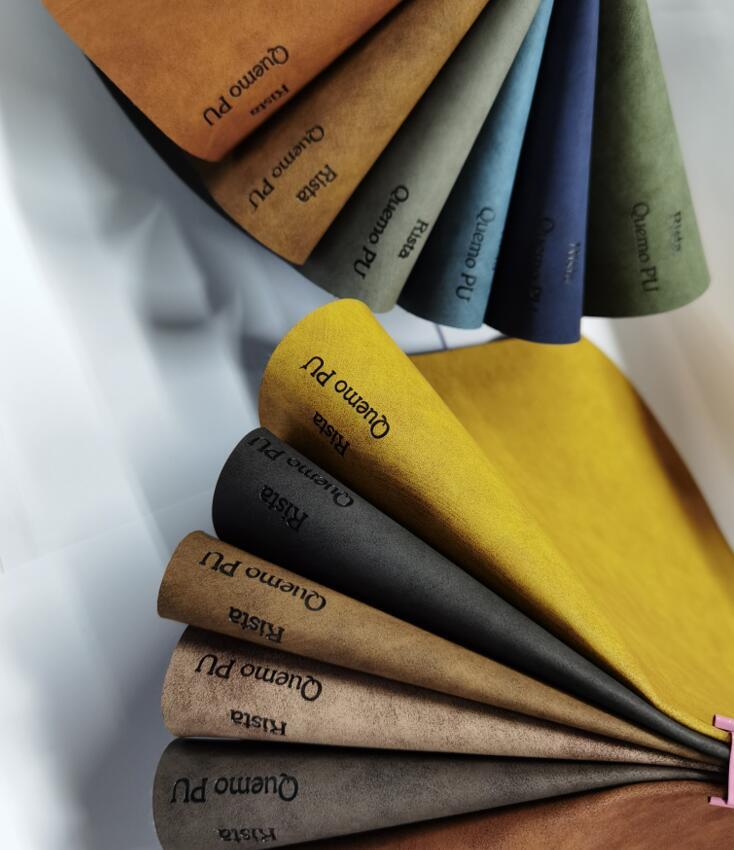Understanding Thermo PU Leather: A Sustainable Alternative in Textile Innovation
Apr 17,2025

Thermo PU leather, a product of advanced textile engineering, is a synthetic alternative to traditional leather that offers a multitude of benefits for both manufacturers and consumers. As the demand for sustainable materials continues to rise, thermo PU leather stands out due to its eco-friendly properties and versatility in various applications.
One of the key characteristics of thermo PU leather is its ability to mimic the appearance and texture of genuine leather while providing distinct advantages. This material is created using polyurethane, a polymer that can be engineered to exhibit desirable qualities such as durability, water resistance, and ease of maintenance. Unlike traditional leather, which often requires extensive processing and chemicals, thermo PU leather is produced through a more sustainable manufacturing process, making it a popular choice for environmentally-conscious brands.
Thermo PU leather is particularly valued in the fashion and automotive industries, where aesthetics and functionality are paramount. In fashion, it is used in a range of products, from handbags to jackets, offering consumers the luxurious look of leather without the ethical concerns associated with animal products. In automotive applications, thermo PU leather is favored for upholstery due to its resistance to wear and tear, as well as its ability to withstand varying temperatures—a crucial factor for vehicle interiors exposed to sunlight and heat.
Another advantage of thermo PU leather is its lightweight nature, which significantly reduces the overall weight of products made from this material. This characteristic is especially beneficial in industries where weight is a consideration, such as in luggage or outdoor gear. Additionally, thermo PU leather can be produced in a variety of colors and finishes, allowing for greater creativity and customizability in design.
From an environmental perspective, thermo PU leather contributes to reduced waste and carbon emissions. Its production typically involves fewer resources and generates less pollution compared to traditional leather production. Furthermore, many thermo PU leather options are recyclable, making them a sustainable choice for consumers looking to minimize their environmental footprint.
In conclusion, thermo PU leather represents a significant advancement in the textile and leather industries, offering a sustainable, versatile, and aesthetically pleasing alternative to traditional leather. As awareness of environmental issues continues to grow, materials like thermo PU leather will likely play an increasingly important role in shaping the future of fashion and design, appealing to both eco-conscious consumers and professionals alike. Understanding the benefits and applications of this innovative material can help industry stakeholders make informed decisions that align with both their business goals and sustainable practices.
One of the key characteristics of thermo PU leather is its ability to mimic the appearance and texture of genuine leather while providing distinct advantages. This material is created using polyurethane, a polymer that can be engineered to exhibit desirable qualities such as durability, water resistance, and ease of maintenance. Unlike traditional leather, which often requires extensive processing and chemicals, thermo PU leather is produced through a more sustainable manufacturing process, making it a popular choice for environmentally-conscious brands.
Thermo PU leather is particularly valued in the fashion and automotive industries, where aesthetics and functionality are paramount. In fashion, it is used in a range of products, from handbags to jackets, offering consumers the luxurious look of leather without the ethical concerns associated with animal products. In automotive applications, thermo PU leather is favored for upholstery due to its resistance to wear and tear, as well as its ability to withstand varying temperatures—a crucial factor for vehicle interiors exposed to sunlight and heat.
Another advantage of thermo PU leather is its lightweight nature, which significantly reduces the overall weight of products made from this material. This characteristic is especially beneficial in industries where weight is a consideration, such as in luggage or outdoor gear. Additionally, thermo PU leather can be produced in a variety of colors and finishes, allowing for greater creativity and customizability in design.
From an environmental perspective, thermo PU leather contributes to reduced waste and carbon emissions. Its production typically involves fewer resources and generates less pollution compared to traditional leather production. Furthermore, many thermo PU leather options are recyclable, making them a sustainable choice for consumers looking to minimize their environmental footprint.
In conclusion, thermo PU leather represents a significant advancement in the textile and leather industries, offering a sustainable, versatile, and aesthetically pleasing alternative to traditional leather. As awareness of environmental issues continues to grow, materials like thermo PU leather will likely play an increasingly important role in shaping the future of fashion and design, appealing to both eco-conscious consumers and professionals alike. Understanding the benefits and applications of this innovative material can help industry stakeholders make informed decisions that align with both their business goals and sustainable practices.






